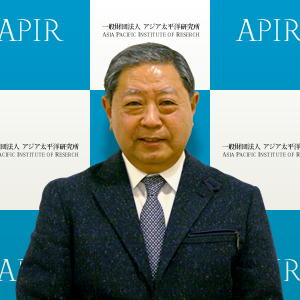
Directors for Research HAYASHI, Toshihiko
Emeritus Professor, Osaka University and Doshisha University
(As of 04/01/2019)
Educational background
- Ph.D., Economics (Stanford University), September 1972
- M.A., (Faculty of Economics, Osaka University), March 1968
- B.A., (Faculty of Economics, Kyoto University), March 1966
Career
- Professor of Economics , University of the Air, 4/2002-Present
- Professor of Economics , Osaka School of International Public Policy(OSIPP), Osaka University, 4/1994-3/2002
- Dean, OSIPP, Osaka University, 4/1996-3/1998
- Professor of Economics, Faculty of Economics, Osaka University, 4/1985-3/1994
- Visiting Resercher, Hoover Institution on War, Revolution and Peace, Stanford University, 7/1983-6/1984
- Associate Professor, Faculty of Economics, Osaka University, 4/1980-3/1985
- Associate Professor, Department of Economics, University of California at Davis, 10/1978-3/197
- Associate Professor, Faculty of Economics, Kobe University of Commerce, 10/1971-3/1980
- Assistant Professor, Institute of Economic Reserch, Kobe University of Commerce, 8/1968-9/1971
Books and Chapters
- Information-Based Economic System, June 2003 (in Japanese). America in the Great Depression, June 2003 (in Japanese). The Governance of the Advanced Information Society, (ed. with Sakai and Tohkura), March 2003 (in Japanese) Japan's Financial Institutions in Turmoil, (ed. with Matsuura and Yonezawa), March 2003 (in Japanese) Currency in Modern Economics 1997 (ed. with Ohyama et. al.), September 1997 (in Japanese). Introduction to Heart and Mind Economics, October 1996 (in Japanese). Network as Civilization (ed. with Ohmura), July 1994 (in Japanese). Telecommunications Industry, ed., July 1994 (in Japanese). Essays on Economy, November 1992 (in Japanese). Telecommunication Economics, (ed. with Mtsuura), October 1992 (in Japanese).
所属学会
- Japanese Economic Association
- Japan Society of Information and Communication
- East Asian Economic Association
